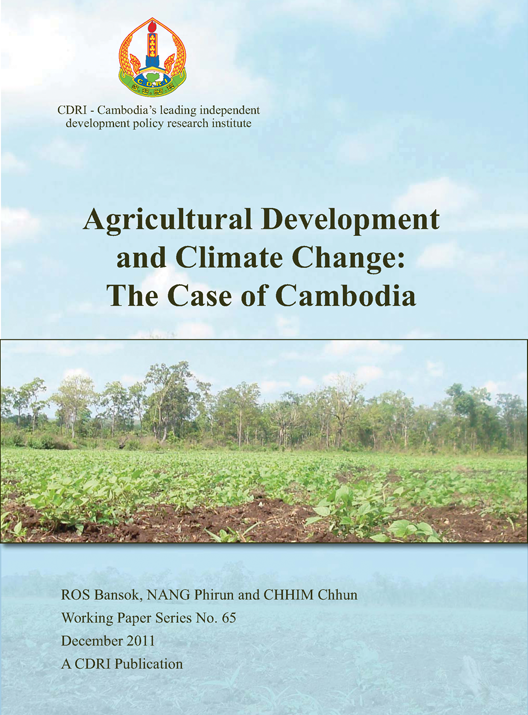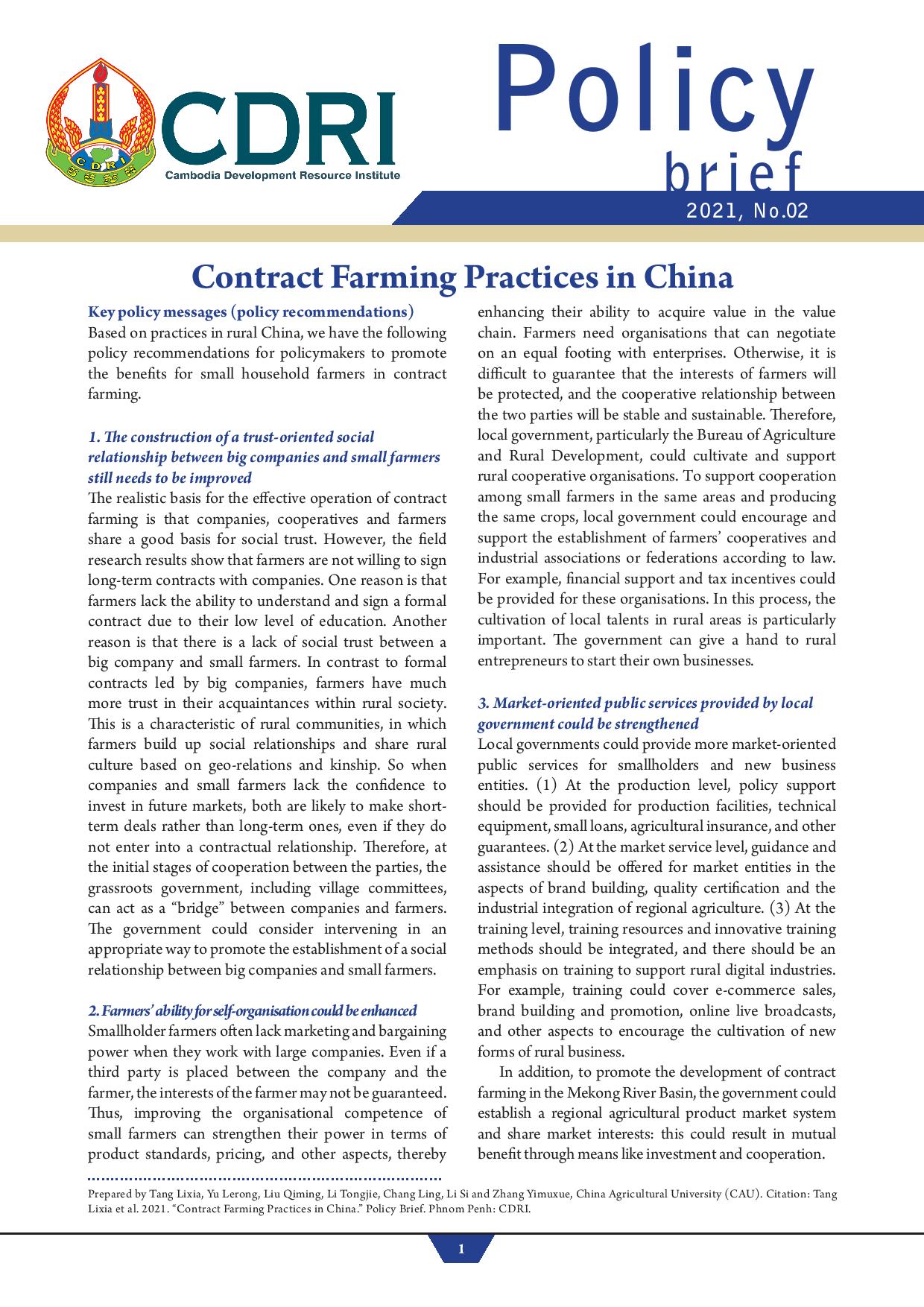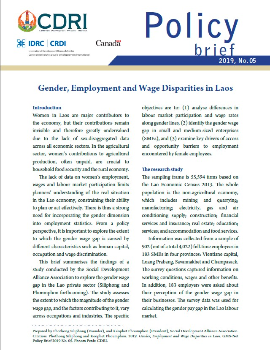
Agricultural Development and Climate Change: The Case of Cambodia
Abstract/Summary
Cambodia’s economy is largely based on the agricultural sector and this sector is the main water user in Cambodia (Wokker et al. 2011a: 1-3). Several studies acknowledge that wet season rice farming is crucially important for livelihoods. With such farming being historically dependent on rainfall, the majority of lowland farmers grow just one crop a year. In recent years, increasingly irregular rainfall, generally associated with climate change, has adversely affected crop production. As a result, water shortages have led to conflicts among farmers which have so far proved difficult to solve (Nang et al. 2011: 37-39).
Rice production significantly contributes to national food security and poverty alleviation. Other major crops, namely maize, cassava, soybeans, peanuts and rubber are also important sources of income generation and livelihood improvement. As of 2007, the overall poverty line for Cambodia has decreased to 30.1 percent from 34.8 percent in 2004 (World Bank 2009: 27). The agricultural sector has been an important contributor to national development and economic growth and it still provides a key share of GDP compared to other sectors, for instance, industry and services. Moreover, agriculture employs just over 67 percent of the country’s total labour force.
The cultivated area, especially rice farming, has expanded over the last three decades from around 1.5 million ha in 1980 to 2.79 million ha in 2010 (MAFF 2011a). Rice production has increased from less than 2 million tonnes in 1980 to approximately 8.25 million tonnes in 2010. Fertiliser use has gradually increased and modern farming equipment, such as tractors, two-wheel tractors, harvesters and threshers, has been slowly introduced, though traditional agricultural techniques and seeds are still widely used. Most rice is grown to meet domestic consumption and market demand. Nevertheless, Cambodia’s rice yield is still the lowest among its neighbouring countries in the region. Annual growth in production is a result of the expansion of the cultivated area rather than intensive farming to improve productivity. Largely delineated by access to irrigation, dry season rice farming constitutes only about 14 percent of total rice cultivation even though dry season yields are higher. Average rice yield in 2010 was 2.76 tonnes per ha in the wet season and 4.2 tonnes per ha in the dry season (MAFF 2011a).
All agricultural sub-sectors have made remarkable progress in terms of production, rice in particular. In addition, forest and fisheries resources have made important contributions to economic growth. Forests are important for livelihoods and the environment, but they no longer provide as many benefits as they used to. Expansion of agricultural land has gradually diminished forest areas thus exacerbating pressure on forest ecosystems and local livelihoods. One of the Cambodian Millennium Development Goals (CMDG) addresses deforestation in the National Forest Policy to maintain forest cover of no less than 60 percent of the country’s total land area by 2015. Fish is the second staple food after rice, with fisheries captures providing 75 percent of national dietary protein. However, current degradation of wetlands and associated habitats compounded by effects of climate change, especially irregular rainfall and hydrological changes, will likely impact on fisheries resources.
Increasingly frequent natural shocks, i.e. drought, flood and cyclone, can have devastating consequences for agricultural activities, especially rice farming. These events tend to hit the most vulnerable of the rural poor the hardest. Irregular rainfall and associated impacts have caused increased loss of agricultural investment (crops, assets) and human life. Majority of farming still depends on rainfall and most farmers grow just one crop a year. The combination of low productivity, volatile prices and limited access to credit may be a critical constraint to improving local livelihoods. Development of more physical irrigation infrastructure is expected to create more opportunities for intensive farming.



